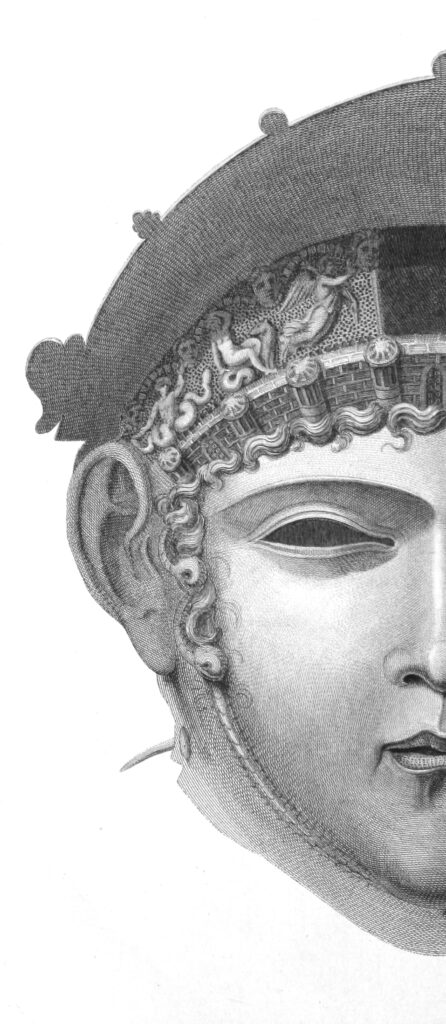The Roman site at Ribchester, Bremetenacum Veteranorum, comprised a fort and civilian settlement or vicus. The earliest Roman fort in Ribchester was established in about 72 AD as part of a network of defensive forts across the north of the new Roman Province of Britannia. This first iteration of the fort which stood for about 60 years was built from timber with a rampart constructed from turf topped with a wooden palisade. In the early 130s AD the ramparts, gatehouses, towers and principal buildings of the fort were all rebuilt in stone. The barrack blocks, although undoubtedly reconstructed at this time stayed as substantial timber constructions.
The fort accommodated a garrison of cavalry troops whose purpose it was to patrol the surrounding area and keep any rebellious elements of the local Brigantes tribe under control. The first unit of cavalry posted at Bremetenacum originated from Spain, the Ala II Asturum, or second Asturian cavalry unit. In 175 AD or shortly after they were replaced by a unit of horsemen from Eastern Europe, a Sarmatian cavalry unit. The Second Asturians moved up to Hadrian’s Wall at this time and can be located at Cilurnum (today called Chesters) fort in AD 180 from an inscription.
The settlement then took unusual veteran status (the Veteranorum of the name) indicating that a high level of importance was attached to the site. At this point, if it had not already, Bremetenacum became the focal point for governance of the area. The civilian site outside the fort was extensive and covered an area more or less corresponding to that of the modern village. Narrow plots were occupied perpendicular to the main Roman roads. Excavations have revealed rectangular wooden buildings used as workshops and dwellings. Craftsmen plied their trades in the vicus providing essential goods for both civilians and military personnel alike. Metalworkers and leather workers were particularly abundant, supplying all kinds of military and cavalry equipment. The vicus was also the site of the baths, the most substantial stone built construction outside the fort, and at least two temples, fulfilling important social and religious functions.
The fort at Ribchester was occupied into the fourth century, although archaeological evidence points to there being little activity in the vicus after the 2nd century. However, current and future excavations may contradict our present understanding.



